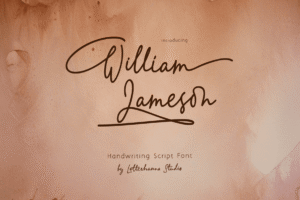You’ve ironed, etched, stamped, stitched, and painted your way through this crafty jungle. But now, dear artisan, it’s time to press your point—literally. Welcome to the beautifully tactile world of letterpress and embossing.
These techniques have been wooing paper lovers since the Renaissance, and they’re still the gold standard for elegance. Whether you’re crafting wedding invitations, thank-you notes, or business cards with bite—today’s projects are all about giving typography some serious texture.
🖨️ What Is Letterpress & Embossing?
Let’s define our new playthings:
-
Letterpress involves pressing inked, raised type into paper for a deep, crisp print.
-
Embossing creates a raised design (no ink necessary!) by pushing paper between two dies—one raised, one recessed.
-
Debossing is the reverse of embossing: it presses inward for a sunken-in effect.
For home crafters, we’re keeping it manual and DIY-friendly (read: no $20K letterpress machines today, folks).
🧰 What You’ll Need:
-
Blank cards or thick paper (at least 200gsm)
-
Embossing folder or DIY embossing stencil
-
Embossing tool (or blunt stylus)
-
Letter stamps or letterpress plates (can be 3D printed!)
-
Optional: Die-cutting/embossing machine (e.g. Sizzix, Cricut Cuttlebug)
-
Ink pad (for letterpress effect)
-
Washi tape, ruler, pencil, and a steady hand
🔠 Typography Tips for Pressed Crafts
-
Serif fonts shine here—think traditional, classy, and deeply readable.
-
All-caps serif gives authority to invitations and formal cards.
-
Avoid hyper-thin fonts—they don’t press well and may look like faint bruises on paper.
-
Bold script fonts can add elegance when embossed.
🧭 Step-by-Step: Handcrafted Press & Emboss Projects
✉️ Embossed Greeting Card
-
Sketch Your Layout
Lightly draw guide lines in pencil. -
Place Your Paper in Folder
Or use a DIY stencil (cut from cardboard) for single words or initials. -
Rub with Embossing Tool
Trace the stencil edges with pressure—work slowly for smooth outlines. -
Flip & Admire
The reverse side should show a raised effect. Simple, clean, chic.
🖋️ Letterpress Effect (Without a Machine)
-
Ink Your Letters
Using alphabet rubber stamps or carved wood blocks. -
Align & Press Firmly
Onto cardstock. Apply even pressure—use a book on top if needed. -
Optional Deboss Touch
While ink is still fresh, press a clean stylus around the edges of the letter to add depth.
🧠 Unique Fact of the Day:
The first movable type letterpress dates back to the 15th century, invented by Johannes Gutenberg. This single invention sparked the modern printing revolution—and yet here you are, doing it for fun, with ink-stained fingers and homemade stencils. The full-circle moment is chef’s kiss.
💌 Typography-Based Project Ideas
-
Thank-You Cards: Embossed initials or words like “GRATEFUL” or “YOU ROCK.”
-
Wedding Invitations: Classic serif fonts, letterpress-inked dates.
-
Quote Cards: Letterpress a motivational phrase, frame it, or slip it into a gift.
-
Mini Business Cards: Debossed logos + your name in clean serif = classy AF.
-
Gift Tags: Use small stencils to emboss monograms or festive words like “JOY” or “LOVE.”
✨ Crafting Wisdom:
-
For embossing: dampen paper very slightly—a light mist can help it mold better.
-
For letterpress: always test your ink pad and spacing on scrap paper.
-
Don’t be afraid to combine embossed designs with ink for mixed-media style.
🧪 Experiment Ideas:
-
Use metallic ink for a luxe letterpress.
-
Try blind embossing—no ink, just texture—for an ultra-minimalist vibe.
-
Pair embossed words with hand-lettered embellishments for a “hybrid typography” look.
🔤 Font Pick of the Day:
Try Playfair Display, Cormorant Garamond, or Lora for elegant serif type. For something whimsical, try Bodoni Moda or Libre Baskerville—they look amazing when pressed!








